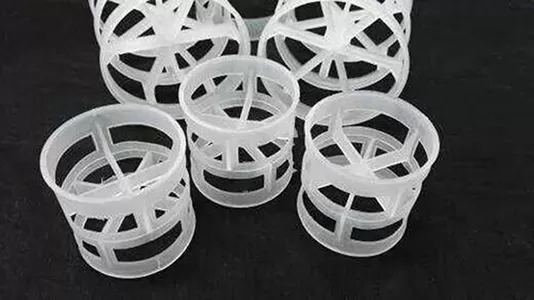Surface tension of plastic packing directly affects its interaction with fluids, influencing wettability and mass transfer in industrial processes. This article outlines key aspects of this property.
Plastic packing, made from materials like polypropylene (PP) or polyethylene (PE), typically has low surface tension—ranging from 28 to 35 mN/m. This low value often leads to poor wettability, as liquids with higher surface tension (e.g., water at ~72 mN/m) tend to bead up rather than spread across the surface. Such behavior reduces contact area, hindering mass transfer in processes like absorption or distillation.

Surface tension is measured using methods like the sessile drop technique, where a liquid droplet’s shape on the packing surface indicates tension balance. Lower plastic surface tension relative to the liquid causes poor wetting; matching or exceeding it improves spreading.
To enhance performance, surface treatments adjust tension. Plasma or flame treatment introduces polar groups, increasing surface energy. Chemical etching creates micro-roughness, aiding liquid adhesion. These modifications bridge the tension gap, boosting wettability and process efficiency.
Understanding and modifying plastic packing’s surface tension is vital for optimizing fluid contact, ensuring efficient industrial operations.

